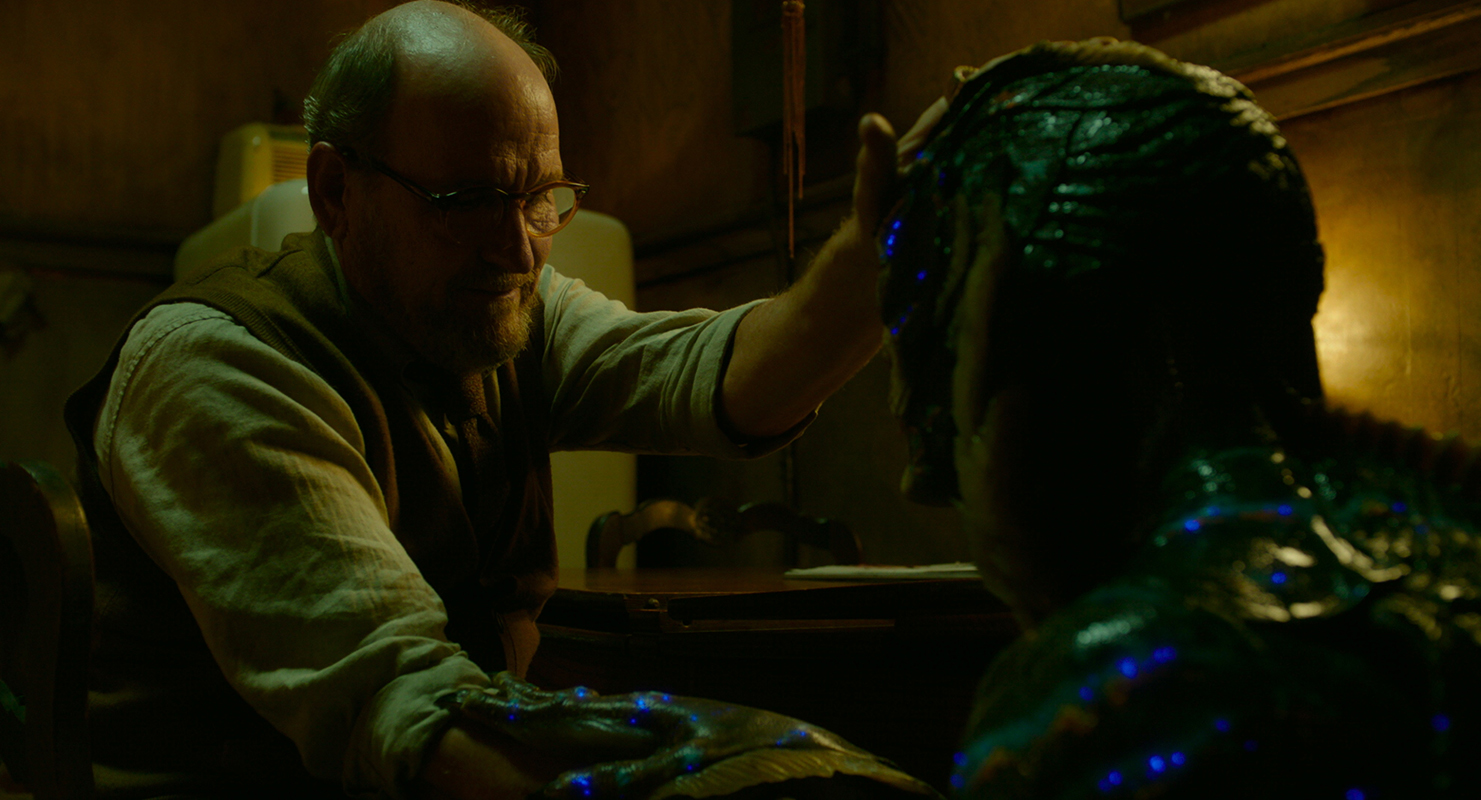Survival of the Fishiest? How 'Shape of Water' Creature Could Evolve

A bizarre fish-humanoid creature is subjected to nefarious experiments in film director Guillermo del Toro's new fantasy thriller "The Shape of Water." Strange as it is, this fictional creature could be explained — at least somewhat — from an evolutionary perspective, scientists say.
The Fox Searchlight Pictures film, which opened in theaters Dec. 1, tells the story of Elisa (Sally Hawkins), a deaf woman who develops an unlikely attraction to the fishlike human (CGI-enhanced Doug Jones), which is held captive at a laboratory by researchers with questionable motivations.
The creature fascinates scientists in the film, and with good reason. The movie's setting is largely realistic, centered in a top-secret U.S. government facility against the backdrop of the Cold War. But the peculiar creature, captured in the Amazon, is an evolutionary anomaly. It is semiaquatic, capable of breathing air or water, and though bipedal and humanoid, it is also adapted for swimming, with fins, webbed feet and hands, and specialized skin that needs to be kept moist.
Does such a creature make evolutionary sense, based on what we know of how life on Earth evolved through natural selection? [Rumor or Reality: The Creatures of Cryptozoology]
As it happens, modern humans do have watery origins — if you peer back far enough on the tree of life. Humans in their present form evolved over billions of years, beginning as simple organisms living in water — an origin story shared by all animals on Earth. From those first forms of life, more-complex body plans emerged over time. Diverse features and specializations allowed animals of all sizes to thrive on land and enabled others to inhabit lakes, rivers and oceans.
Nearly all vertebrates, animals with backbones, can trace their ancestry to a tiny, primitive fish named Metaspriggina that lived more than 500 million years ago, scientists reported in a study published in 2014 in the journal Nature. Then, around 400 million years ago, some ancient fishes used their muscular fins to propel themselves over mud, with their descendants eventually emerging to live on land, developing lungs and legs.
These were the first tetrapods: air-breathing animals that were fish-like but had the rudimentary beginnings of a four-limbed body plan. This formed the basic blueprint for all land animals to come.
Get the world’s most fascinating discoveries delivered straight to your inbox.
After tetrapods took to land, hundreds of millions of years would pass before a bipedal humanoid form emerged. The earliest fossil evidence of upright walking in a human ancestor dates to about 8 million years ago, in a hominin called Orrorin tugenensis, according to a study published in 2008 in the journal Science.
A puzzling creature
If the world in "The Shape of Water" followed this same evolutionary timeline, the movie creature — a two-legged, water-dwelling humanoid — would raise puzzling questions about its place on a tree of life. But under the right conditions, evolution by way of natural selection could hypothetically shape such an animal, Jonathan Losos, a professor of organismic and evolutionary biology at Harvard University, told Live Science.
The fish-human creature has gills but also appears capable of breathing air. And some animals in the real world can, in fact, breathe both water and air. Lungfish rely on gills that interact with functional lungs to provide the animals' oxygen, and these creatures will drown if they're submerged for too long. Some species of turtles can extract oxygen from water through their backsides, essentially breathing through their butts. [Extreme Life on Earth: 8 Bizarre Creatures]
Over millions of years, environments have posed similar challenges to the diverse creatures that live in those settings. Often, unrelated species evolve the same optimal solution to those challenges, a phenomenon known as convergent evolution, Losos explained.
Convergent evolution explains how animals that are not close relatives can share similar characteristics or traits, such as the streamlined body found in both ancient ichthyosaurs and modern dolphins, or the jaw structures that appear in both whales and pelicans. Hypothetically, convergent evolution could also lead to bipedalism and a human-like appearance in both humans and a creature more closely related to fish.
"Hollywood certainly hasn't violated any rule of evolution to produce a biped that evolved to be convergent with humans and share a lot of features," Losos said.
But, ultimately, the filmmakers' choice of a human-like appearance for their creature probably owes more to perceptions of the human form as a "pinnacle" of evolution, Losos said. This bias is frequently seen in science-fiction portrayals of extraterrestrials that look remarkably like humans, he said.
In reality, the fact that there are no other species alive today that look like modern humans is a good indication that the reason we look the way we do is "just a fluke of evolution," he added.
"While there are many, many cases of convergent evolution of other adaptations, for some reason, the human life-form only evolved once. The way that primates evolved ultimately made something like us possible, but I see no reason to assume that intelligent life forms must look at all like us," Losos told Live Science.
Original article on Live Science.

Mindy Weisberger is a science journalist and author of "Rise of the Zombie Bugs: The Surprising Science of Parasitic Mind-Control" (Hopkins Press). She formerly edited for Scholastic and was a channel editor and senior writer for Live Science. She has reported on general science, covering climate change, paleontology, biology and space. Mindy studied film at Columbia University; prior to LS, she produced, wrote and directed media for the American Museum of Natural History in NYC. Her videos about dinosaurs, astrophysics, biodiversity and evolution appear in museums and science centers worldwide, earning awards such as the CINE Golden Eagle and the Communicator Award of Excellence. Her writing has also appeared in Scientific American, The Washington Post, How It Works Magazine and CNN.

